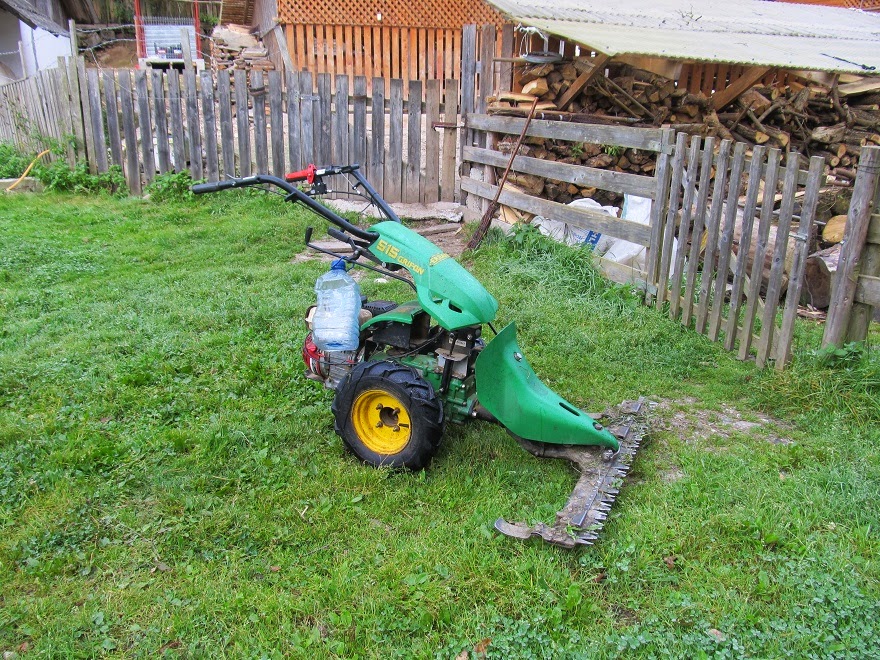Perhaps the most striking impression we have is the historic quaintness of people’s lives. Some 45% of the population is engaged in agriculture, and in the mountainous regions where we travelled, much of the labour is expended in semi-subsistence farming.
Agricultural technology
In Australia, if one were to poke around abandoned farm sheds, one would see old leather horse harnesses and obscure carpentry or blacksmithing tools hung on the walls, and rotting and rusty wagons in the farm’s graveyard. I have clear memories of such items from the sheds of my childhood. Here in Romania, those harnesses, tools and wagons are still very much in daily use on the roads and small farms.
Haymaking
We took countless photos of farmers, and indeed the whole family, going about their work (it’s haymaking time here) using scythes, wooden hand-rakes, wooden pitch-forks, horse-drawn wagons. Hay is made throughout the summer, with the grass from freshly cut sections of a paddock being turned by hand-rake or pitchfork to encourage drying, then either hung on wooden racks for complete drying, or stacked into a kind of tall igloo-stook, reminiscent of our children’s ‘Grugg’ storybooks. The most fascinating part of the latter is that when the loose stook has dried enough in the paddock, it is tipped over onto a wagon (horse-drawn of course), and taken holus-bolus to the hayshed – where it is transferred by pitchfork to the ‘hayloft’. Animals will be housed under the loft during the winter. We stared in disbelief that so many acres at a time are harvested in this way, often by the extended family busily working all day. Late in the afternoons was best, with many wagons loaded with hay on their way back to the village houses – yes – most animals are kept within the village confines.
 |
| Cutting hay by hand |
 |
| Usually we would see families working together, but sometimes it was just a single old man or woman working alone in a large field |
 |
| Drying racks, where the hay is hung out to dry like washed clothes |
 |
| The small hay stacks were everywhere. Village houses may have just one or two in the yard. |
  |
| Finally the end product is loaded onto a wagon for storage in sheds. |
 |
| Small hay sheds like this dot the country side in some areas |
Animals
There are few fences, and cows and sheep are usually accompanied and tended by the farmer – a vivid illustration of the good shepherd imagery of Biblical times! Many of the animals wear bells that announce their whereabouts. A large sheepdog is used to keep them from wandering and to protect them from wolf, bear, lynx and the Aussie tourist.
Winters are terribly cold and the villages are often snow-bound. During the summer, sheep and cattle are kept on the high country. It seems that their milk is used to feed to pigs, or is made into cheese.
It is very easy to build a romantic picture of life the way it used to be and is, but the reality is that this is a subsistence level of agriculture and life.
  |
Cows and horses often graze on the side of the roads and seem to have good "traffic sense". Even the pig took care! |
 |
| Taking the family cow out to graze |
 |
| A shepherd tending a large herd of sheep. Usually we saw just a few animals being watched over |
 |
| The other side of Romania: good roads, extensive agriculture and large towns. But even the main highways may have to be shared between horses and semi-trailers. |










No comments:
Post a Comment